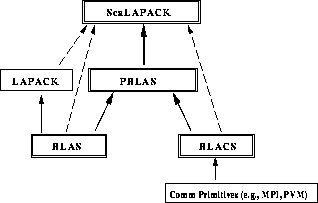
Figure 2: Hierarchical view of ScaLAPACK.
The ScaLAPACK routines are composed of a small number of modules. The most fundamental of these are the sequential BLAS, in particular the Level 2 and 3 BLAS, and the BLACS, which perform common matrix-oriented communication tasks. ScaLAPACK is portable to any machine on which the BLAS and the BLACS are available.
The BLACS comprise a package that provides ease-of-use and portability for message-passing in a parallel linear algebra program. The BLACS efficiently support not only point-to-point operations between processes on a logical two-dimensional process grid, but also collective communications on such grids, or within just a grid row or column.
Portable software for dense linear algebra on MIMD platforms may consist of calls to the BLAS for computation and calls to the BLACS for communication. Since both packages will have been optimized for each particular platform, good performance should be achieved with relatively little effort. We have implemented the BLACS for the Intel family of computers, the TMC CM-5, the IBM SP1 and SP2, and PVM. Several vendors are producing optimized versions of the BLACS (e.g. Cray, IBM, and Meiko). We plan to produce an MPI version of the BLACS in the near future.
The Parallel BLAS (PBLAS) are an extended subset of the BLAS for distributed memory computers and operate on matrices distributed according to a block cyclic data distribution scheme. These restrictions permit certain memory access and communication optimizations that would not be possible (or would be difficult) if general-purpose distributed Level 2 and Level 3 BLAS were used [9][7].

Figure 2: Hierarchical view of ScaLAPACK.
The sequential BLAS, the BLACS, and the PBLAS are the modules from which the higher level ScaLAPACK routines are built. The PBLAS are used as the highest level building blocks for implementing the ScaLAPACK library and provide the same ease-of-use and portability for ScaLAPACK that the BLAS provide for LAPACK. Most of the Level 2 and 3 BLAS routines in LAPACK routines can be replaced with the corresponding PBLAS routines in ScaLAPACK, so the source code of the top software layer of ScaLAPACK looks very similar to that of LAPACK. Thus, the ScaLAPACK code is modular, clear, and easy to read.
Figure 2 shows a hierarchical view of ScaLAPACK. Main ScaLAPACK routines usually call only the PBLAS, but the auxiliary ScaLAPACK routines may need to call the BLAS directly for local computation and the BLACS for communication among processes. In many cases the ScaLAPACK library will be sufficient to build applications. However, more expert users may make use of the lower level routines to build customized routines not provided in ScaLAPACK.